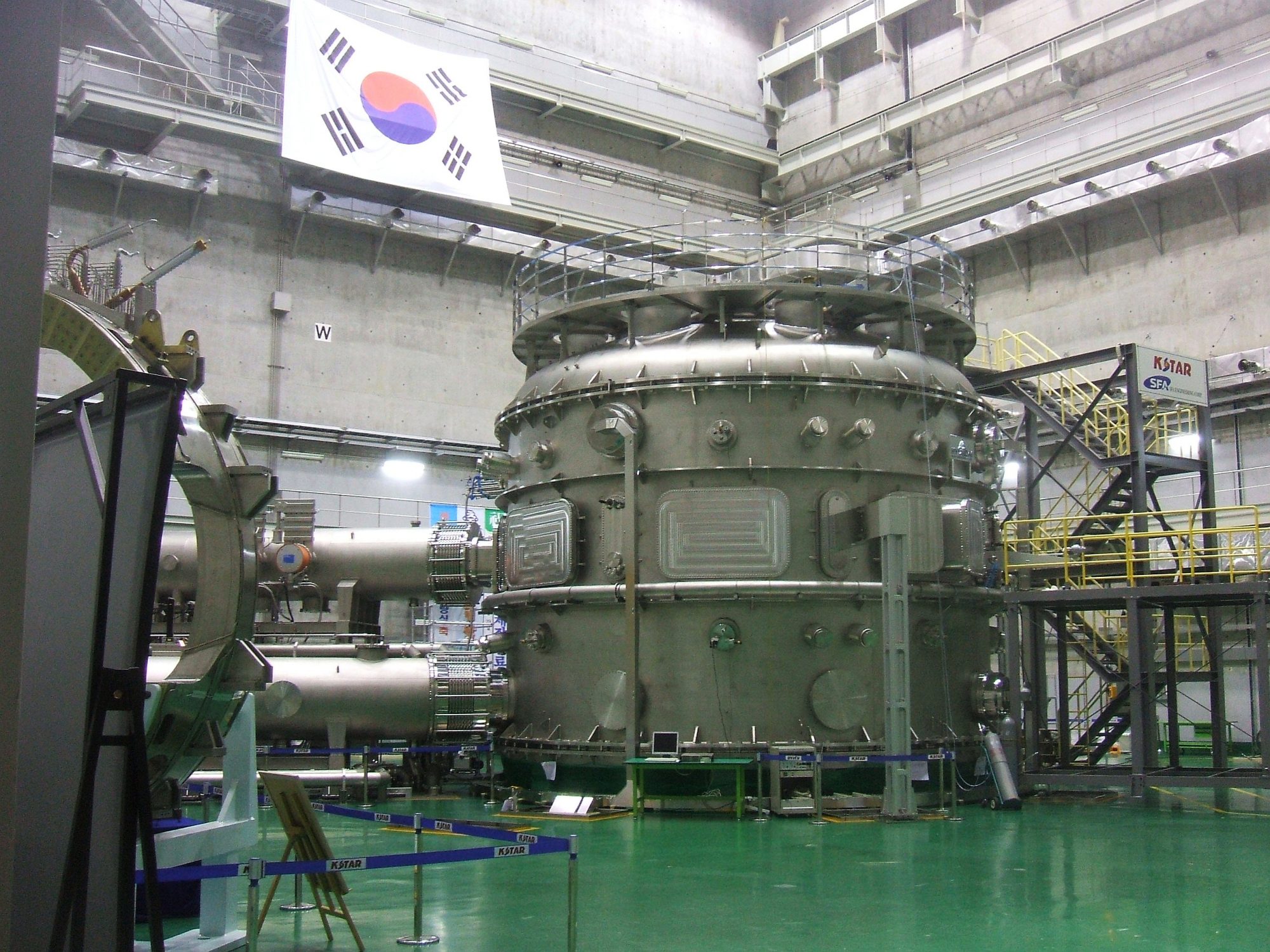South Korean researchers announced on Christmas Eve that their KSTAR tokamak reactor sustained a plasma with a temperature of over 100 million degrees Celsius for 20 seconds. In plasma fusion research terms, 20 seconds could be described as "whopping." In absolutely all terms, 100 million degrees is extraordinarily hot and extremely bitchin'. Simply do not approach a 100-million-degree plasma cloud without some sturdy sunglasses and an appropriate layer of SPF.
Tokamaks, you may remember, are donut-shaped reactors that suspend a cloud of mixed hydrogen isotopes in a magnetic field and then heat them to unfathomable temperatures in order to trigger nuclear fusion. Unlike nuclear fission, fusion creates no radioactive waste; unlike fossil fuels, fusion creates no greenhouse gases. And because the specific cocktail being used for plasma fuel is a mixture of a couple reasonably common hydrogen isotopes, a self-sustaining, energy-positive fusion reaction would theoretically solve humanity's energy needs for all time. Promising fusion experiments are underway at tokamaks and assorted other reactors all over the globe. They even made a tokamak video game!
This KSTAR news may not sound like much, but when we are talking about temperatures that are not found anywhere in our solar system, including the very core of the literal Sun, twenty seconds of stability is no small accomplishment. KSTAR first topped the 100-million-degree threshold in 2018, in 2019 they held above that mark for an encouraging eight seconds. Now, with December's experiment, they have more than doubled their previous best result. Their goal, according to a helpful summary from Phys Org, is to produce a plasma that sustains at over 100 million degrees for five full minutes, and they hope to get there by 2025.
Commercial energy production will be possible when scientists have mastered the delicate work of sustaining a superheated plasma cloud for long, and perhaps indefinite, periods of time, and when the thermal output of the reaction is greater than the amount of energy needed to trigger and sustain it. The Joint European Torus, in the UK, is atop the current leaderboard in the hunt for energy breakeven, and now the KSTAR is surging ahead at reaction longevity. All these various plasma nerds are scheduled to meet and compare notes at the IAEA Fusion Energy Conference, in May. Things are happening.
But wait, you are probably saying. In what way is 100-million-degree plasma useful or even manageable for commercial energy production? You fool! That temperature is mostly irrelevant to the energy production side. Commercial energy production, when we get there, will likely be generated by our reliable old pal the turbine, which as in all nuclear power plants will be turned by steam generated from boiling liquid. It's a little bit boring at that stage: Residual heat from the reaction, which typically clocks in around 500 - 1,000 degrees Celsius instead of a terrifying 100 million, is used to convert water to steam, and steam rises and interacts with turbines, and the turbines create electricity or whatever. Listen, I am not the United States Secretary of Energy. What I am is a plasma expert (I am not a plasma expert).
So, yes, 100 million degrees is a little bit excessive when the goal, ultimately, is to boil some water. But when your goal is to boil water continuously for the rest of time, and without consuming any finite fuel sources or creating any waste products, nothing less than star juice will suffice.
H/t Pat






